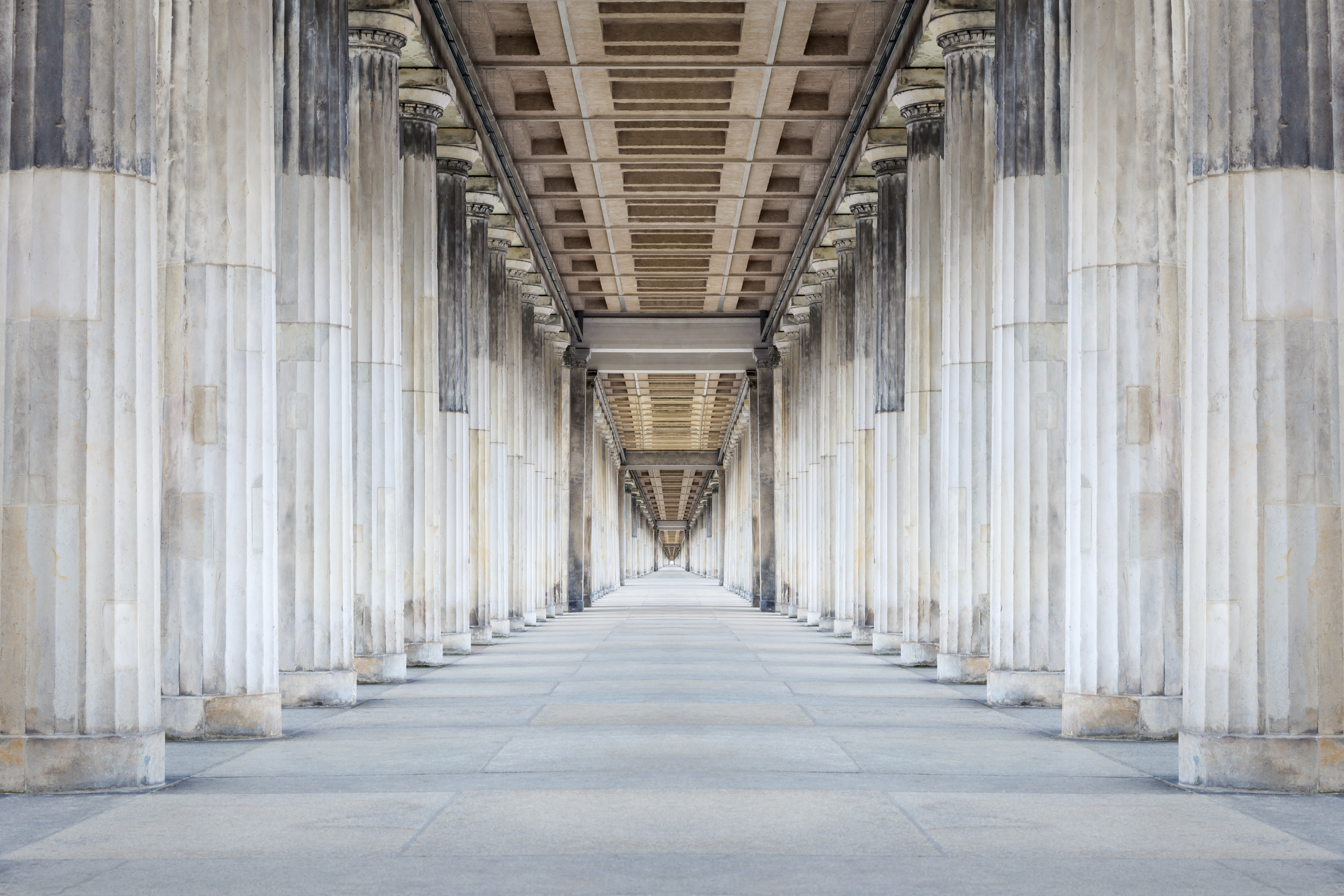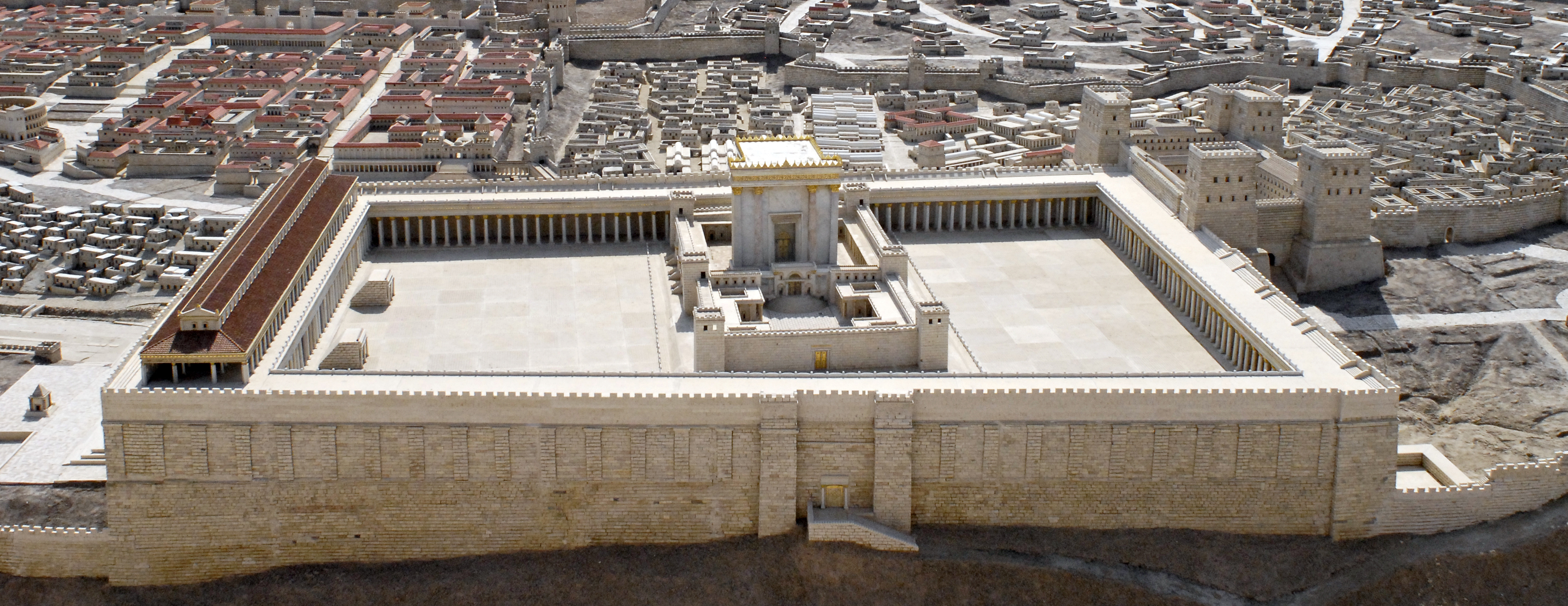Acts 5:12, Solomon’s porch/portico/colonnade. This was a large covered area supported by marble columns which supported a wooden roof structure and was located on the east side of the temple mount area along the eastern wall that overlooked the Kidron Valley and faced the Mount of Olives just above the Garden of Gethsemane. This portico was built so that pilgrims and Levites visiting the temple would have a place to gather that was protected from the weather. Meetings and gatherings occurred here, and this was a gathering place of the early disciples as noted in Acts 3:11. There Yeshua taught and debated with the Jews (John 10:22–29). Here, the disciples were gathered in one accord (Acts 5:12). This is likely the spot where the Acts 2 Pentecost gathering occurred.
This portico (colonnade or cloister) that was located on the eastern wall and that existed in the time of Yeshua and the disciples was originally constructed by King Solomon according to Flavius Josephus.
These cloisters belonged to the outer court, and were situated in a deep valley, and had walls that reached four hundred cubits [in length], and were built of square and very white stones, the length of each of which stones was twenty cubits, and their height six cubits. This was the work of King Solomon, who first of all built the entire temple. (Josephus Flavius Ant. xx.9.7)
While the Babylonians destroyed the temple in their conquest of Jerusalem in about 586 B.C., if we are to believe Josephus, they apparently left Solomon’s Portico intact.
In the description of Solomon’s Temple and the complex including not only the temple itself, but its adjacent houses, upper chambers or rooms and inner chambers we read the following:
Then David gave to his son Solomon the plan of the porch of the temple, its buildings, its storehouses, its upper rooms, its inner rooms and the room for the mercy seat; and the plan of all that he had in mind, for the courts of the house of the LORD, and for all the surrounding rooms, for the storehouses of the house of God and for the storehouses of the dedicated things… (1 Chron 28
11–12; NASB)
We don’t know where these upper rooms were located in the temple complex, but if they were located in what later became known as Solomon’s Porch, which was still in existence in the first century, then this may give us a clue where the upper room that is mentioned in the Book of Acts was located, and where the gathering of the saints on the day of Pentecost occurred. In addition to Solomon’s Porch on the east side of the Temple Mount area, additional porticos were constructed subsequently by King Herod (in 16 B.C.) on all the other sides of the Temple Mount along the outside walls (Smith’s Bible Dictionary, p. 681; The International Standard Bible Encyclopedia, vol 4, p. 772). The portico on the south side was larger and taller than the others and was called the Royal Portico (ibid.; Jospephus’ Ant. xv.11.5).



